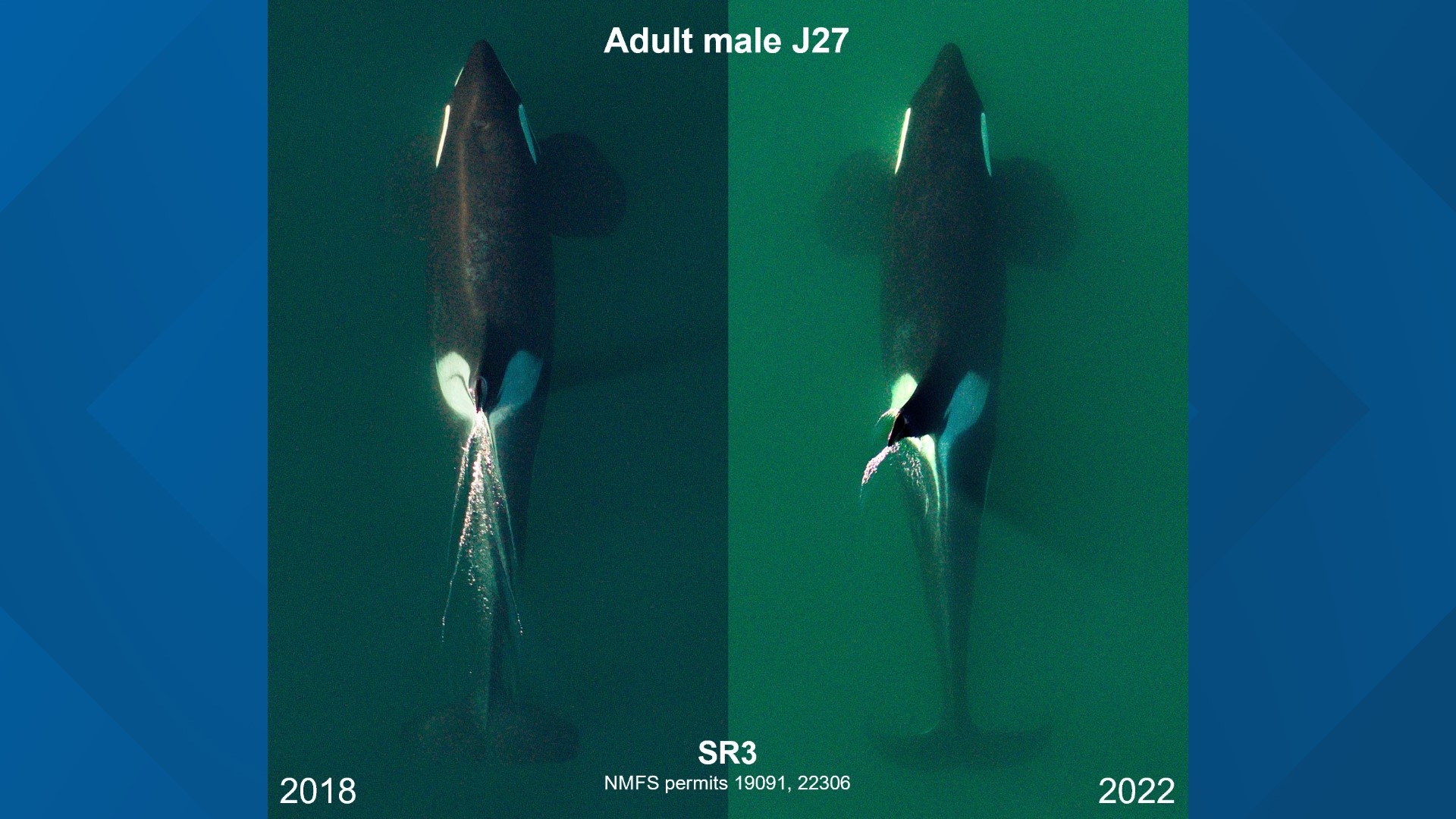WASHINGTON — Editor's note: The above video on 13 Southern Resident killer whales declared vulnerable originally aired July 1, 2022.
Southern Resident killer whales have not had enough food for several years, which could affect their already small numbers, according to a study by the University of British Columbia.
Researchers looked at the requirements and availability of prey for Northeastern Pacific Southern Resident killer whales. The study found a fluctuating level of salmon from spawning areas on rivers had a detrimental effect on killer whale health, threatening a small and fragile group of whales.
"It really appears like they cannot take (many) more rough years," said Fanny Couture, lead researcher for the study.
About 75 of the Southern Resident killer whales span from the California coast to Haida Gwaii in British Columbia's Queen Charlotte Islands.
Chinook salmon represent up to 90% of the Southern Resident killer whales' diet during the summer months, according to the study. Orcas are estimated to eat between 166,000 and 216,300 Chinook salmon between April-October.
But the study showed a significant decrease in salmon between the years 1979 and 2020, even as fishing regulations attempted to bolster their numbers. That leaves animals high on the food chain, like killer whales, without adequate prey.
Studies have shown that a lack of food intake for killer whales has led to lower birth rates and higher death rates. The current study agreed, showing a slightly higher birth rate in years where the killer whales met their dietary needs. The Southern Resident killer whales were found to be in an "energetic deficit" in six of the last 40 years, according to the study.
Scientists in the study said killer whales' slow-reproduction rate, late sexual maturity, small population size and low levels of genetic variation place the animals at risk.
Boat traffic, underwater noise caused by vessels and toxic contaminants are human-related factors also negatively impacting the animals, the study found.
Thirteen of the area Southern Resident killer whales were declared "vulnerable" by the Washington Department of Fish and Wildlife
The agency issued an emergency order requiring commercial whale-watching vessels to stay farther away from the animals, which have been considered endangered in the United States and Canada since 2008.
Washington's Salmon Recovery Office launched a new website in May to track recovery efforts for the Southern Resident Killer Whale population, which has reached its lowest number in more than 30 years, according to the state.
The new website tracks the state's progress in implementing 49 recommendations put forth by the Southern Resident Killer Whale Task Force in 2020, to achieve a goal of bolstering the orca population to 86 whales by 2030 and 110 whales by 2050.

